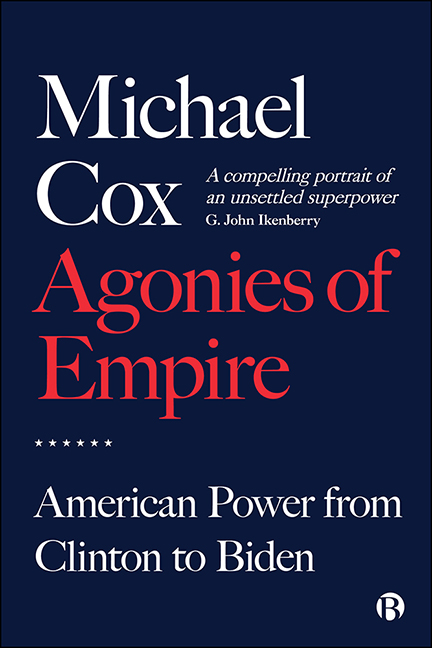Book contents
- Frontmatter
- Dedication
- Contents
- About the Author
- Preface
- Introduction: The Rise of an Empire
- PART I Clinton: Liberal Leviathan
- PART II Bush Jnr: Empire in an Age of Terror
- PART III Obama: Towards a Post-American World?
- PART IV Trump: Turbulence in the Age of Populism
- PART V Biden: Is America Back?
- Notes and References
- Acknowledgements
- Index
3 - Failed Crusade? The United States and Post-Communist Russia
Published online by Cambridge University Press: 15 September 2022
- Frontmatter
- Dedication
- Contents
- About the Author
- Preface
- Introduction: The Rise of an Empire
- PART I Clinton: Liberal Leviathan
- PART II Bush Jnr: Empire in an Age of Terror
- PART III Obama: Towards a Post-American World?
- PART IV Trump: Turbulence in the Age of Populism
- PART V Biden: Is America Back?
- Notes and References
- Acknowledgements
- Index
Summary
As we showed in Chapters 1 and 2, Clinton concentrated his not inconsiderable talents on first making sure America could compete effectively in the emerging global economy and then attempting to square the circle (not always successfully) by linking this to a defined strategy of enlarging the number of democracies in the world. Clinton was liberal enough to know that his main task was to strengthen a liberal order from which America benefited; but he was realist enough too to understand that a post-Cold War order without the Soviet Union offered up huge opportunities that would afford the US a lengthy breathing space within which it would be able to consolidate its own hegemony, strengthen its position within the family of advanced liberal democracies, and where feasible, extend market capitalism to those countries attempting to make the transition out of planning and economic autarchy. Taken together, these formed what we might call the ‘core’ of America's strategic mission in the 1990s. Getting Russia right however was central to all this. If the US could facilitate the transition to a more Western-style political economy (as was beginning to happen in Central and Eastern Europe) then according to Clinton the future looked bright indeed. If, however, reform in Russia failed, the United States would face a very insecure future with the strong possibility, according to one very senior official, of ‘a renewed nuclear threat, higher defence budgets, spreading instability, the loss of new markets and a devastating setback for the worldwide democratic movement’. Engaging with reform therefore was not just in Russia's interest, but in America's too.
The discussion which follows attempts to chart the history of the US–Russia relationship through the 1990s. The argument advanced is a simple one: that in spite of various American interventions, facilitating an American-style transition in Russia proved to be an almost impossible task. Whether this was because of a failure on Washington's part to grant Russia the respect it felt it deserved, the decision to enlarge NATO, or the complex legacy left behind by the old Soviet Union followed by its headlong economic collapse after 1991, will no doubt be debated for many years to come.
- Type
- Chapter
- Information
- Agonies of EmpireAmerican Power from Clinton to Biden, pp. 40 - 54Publisher: Bristol University PressPrint publication year: 2022



